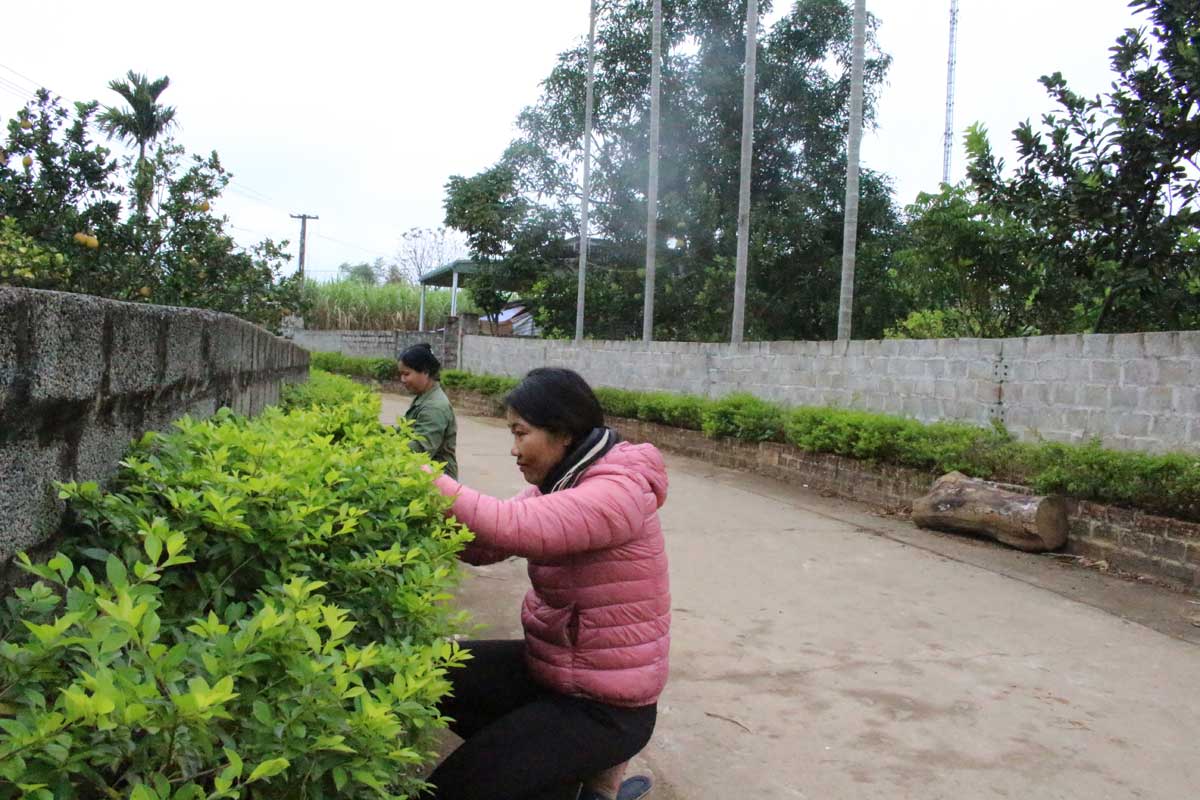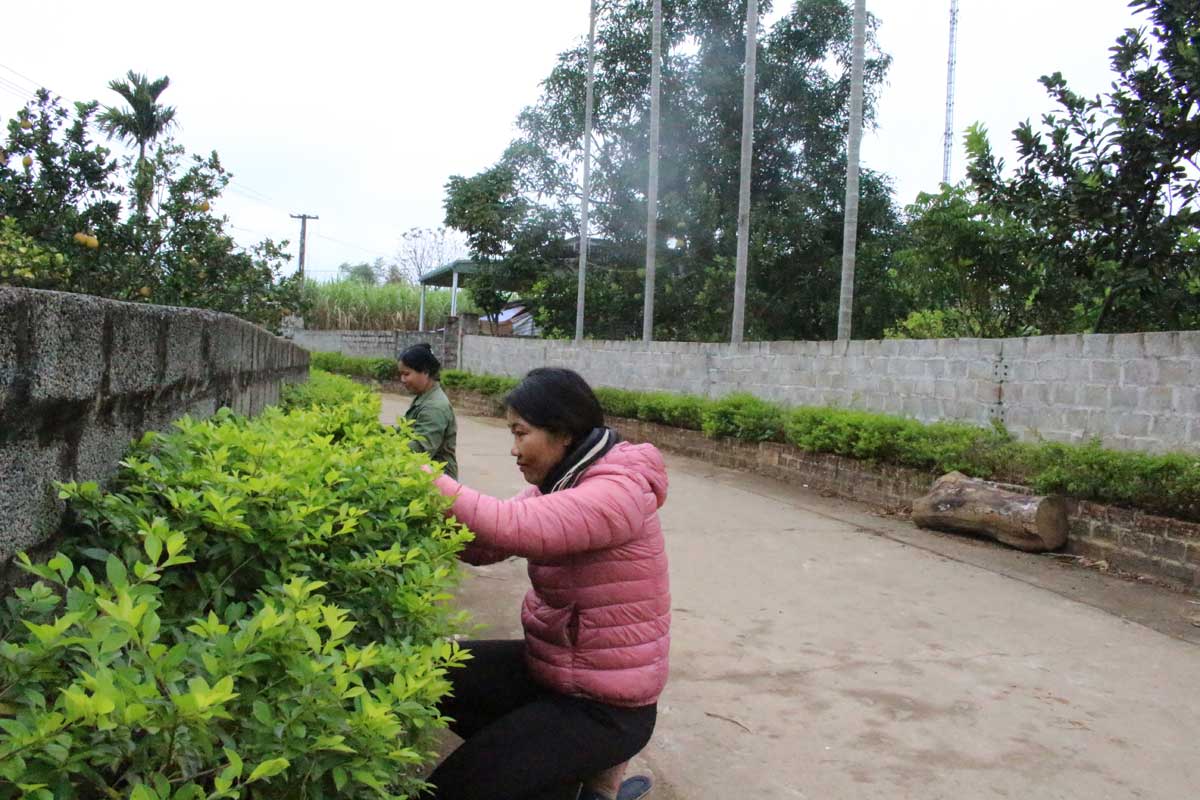
(HBO) - Dong Nhat village, Dung Phong commune (Cao Phong) is a newly merged hamlet. With the consent of the people, the hamlet has succeeded in building a model of new rural residential area.

The people
in Dong Nhat hamlet, Dung Phong commune (Cao Phong) are taking care of flowers
along the road, creating a green - clean - beautiful landscape.
There
are 140 households with 638 people in Dong Nhat hamlet. The people always unite
to perform the common tasks such as building roads, canals, cleaning
environmental sanitation ... In 2020, the hamlet mobilized over 1,800 working
days to do 500 meters of roads, to plant 1,000 meters of flower roads. In the
village, every household has a fence made of concrete, or with carefully
trimmed green trees.
Along
with creating a landscape, keeping the environment clean, green and beautiful,
the people in the hamlet are also pioneering and leading in the movement of
renovating the mixed gardens to plant crops of high economic value. Although
100% of the budget had to be spent, the movement of renovating the mixed garden
has received enthusiastic responses from the local people. The percentage of
households participating is 84%. Up to now, in the whole village there is 3.6
ha of citrus. The gardens of pomelos and oranges with a lot of dark yellow
units, providing a stable source of income for people. Thanks to the
improvement of the mixed gardens and the bold investment in economic
development, many households have a high income, from 300-400 million VND every
year. Typically, it is the households of Mr. Bui Van Ky, Mr. Bui Van Thu ...
Along
with the economic development, the hamlet has been focusing on improving the
spiritual life of the people. There are 2 men's volleyball teams, 2 steam
volleyball teams for the elderly, and a nursing club in the hamlet. The club of Muong folk culture has been
maintained with the participation of 22 members. The club teaches the young
generation how to play gongs and sing Muong folk tunes. Thanks to that, nearly
100% of the people in the village know how to beat Muong gongs. People
participate in performing Muong gongs on the occasions of holidays, New Year,
the Festival of Crop Opening of Muong Thang.
The
construction of the new residential area has contributed to improving the
material and spiritual life for the people. Dong Nhat is increasingly spacious,
civilized, modern, and people are eager to emulate in the movement of economic
development. By 2020, the poverty rate of the hamlet only had accounted for
0.2%. The income per capita had beenover 47 million dongs and 100% of people had used the clean and hygienic
water ...
With an increasingly vibrant and widespread emulation movement aimed at building cultured residential areas and cultured families, Yen Thuy District has been making steady progress toward improving both the material and spiritual well-being of its people, while fostering a civilized, prosperous, beautiful, and progressive community.
Once lacking recreational spaces and community facilities, Residential Group 2 in Quynh Lam Ward (Hoa Binh City) has recently received attention for the construction of a new, spacious, and fully equipped cultural house. The project followed the model of state support combined with public contributions in both labor and funding.
The "All people unite to build cultural life" movement, which has been effectively integrated with Kim Boi district’s socio-economic development goals, is fostering a lively spirit of emulation across local residential areas, hamlets, villages, public agencies, and enterprises. In addition, through the initiative, traditional cultural values are being preserved and promoted, while community solidarity and mutual support in poverty reduction and economic development are being strengthened.
A working delegation of the Hoa Binh provincial People’s Committee led by its Permanent Vice Chairman Nguyen Van Toan on June 11 inspected the progress of a project to build the Mo Muong Cultural Heritage Conservation Space linked to tourism services in Hop Phong commune, Cao Phong district.
Born and growing in the heroic land of Muong Dong, Dinh Thi Kieu Dung, a resident in Bo town of Kim Boi district, in her childhood was nurtured by the sweet lullabies of her grandmother and mother. These melodies deeply imprinted on her soul, becoming an inseparable part of her love for her ethnic group's culture. For over 20 years, this love for her hometown has driven Dung to research, collect, and pass down the cultural values of the Muong people to future generations.
In the final days of May, the Ethnic Art Troupe of Hoa Binh Province organized performances to serve the people in remote, mountainous, and particularly disadvantaged areas within the province. These were not just ordinary artistic shows, but they were the meaningful journeys aimed at spreading cultural values, enhancing the spiritual life of the people and contributing to the preservation of ethnic minority cultural identities.



